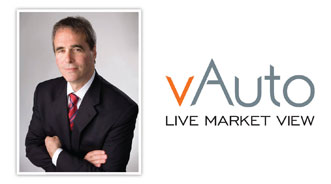Does the Size and Shape of a Dealership Really Matter?

Today, retail automobile dealers are considered to be successful if they achieve a 2 percent net-to-sales return. Compared to general business net returns of 15 – 20 percent, the automobile dealer’s return is staggeringly low.
In addition, automobile dealerships require an extraordinary amount of investment capital. After the recent economic downturn, dealerships now have to invest even more capital to address deferred maintenance, repair and corporate compliance requirements. Therefore, it is time to re-examine traditional assumptions about dealership shape and size.
Traditional dealerships are generally configured on many acres of prime high-visibility real estate. These parcels typically house new- and used-car sales, mechanical and parts, office administration and sometimes collision repair. The question is whether this type of configuration makes economic sense. In light of low expected financial returns both today and tomorrow, the conclusion is that they do not.
Consider a case for an alternative configuration of shape and size. First, prime high-visibility real estate is very expensive, both in acquisition and taxation. In fact, dealerships do not need the same amount of acreage because they should never again have to carry the inventory stock of overproducing manufacturers. Further, new- and used-car sales today are driven less by physical traffic and more by Internet visibility.
In addition, present and future margins cannot justify the cost of performing mechanical or collision repairs on the most expensive real estate in the community. While it’s a nice convenience to have sales and service operations located together it is not necessary or economically prudent.
Parts and mechanical service can be performed at significantly reduced costs when located on less expensive and lower taxed property. Such property only needs to be convenient, accessible, safe and clean. Perhaps in the future, similarly minded dealers may establish service parks as they’ve done in the past with dealership malls. Separating sales from mechanical operations also allows a dealer the ability to achieve several other advantages.
With the proper shape, dealerships can successfully achieve new- and used-car sales dominance at a much lower fixed cost. This can be achieved by locating new- and used-car sales operations near busy retail shopping areas but on much lower cost property. The property size needs to be only a small fraction of its traditional counterpart. The size might be as little as 1 to 1.5 acres; the difference is however, that instead of a structure expanding horizontally, it takes a vertical shape. Occupying the ground floor of the property is a highly finished showroom that meets all corporate compliance requirements. On top of the showroom is an open-air parking deck structure for customer parking and new- and used-car display.
Unlike the high-cost prime real estate dirt, the air above the showroom is free from both acquisition cost and taxation. Further, the open-air parking deck structure provides dealers with very low-cost construction, maintenance and is completely free from heating and air conditioning. With proper lighting, such structures are ideal for vehicle storage and display.
Even though this new configuration makes much more financial sense, most American dealers are saddled with their present high-cost property configuration. Without question, dealers will need help in making a transition to more efficient, lower cost land and facilities. Assistance and incentives could come from both the manufacturers and municipalities. Both of these entities have a common interest in the long-term viability of the dealer.
Instead of providing assistance and incentives for reinvesting in inefficient legacy facilities, the manufacturer can and should work in partnership with local municipalities and dealers to create incentive packages which allows dealers to make this more efficient and prudent transition in both facility shape and size. So, to answer the question of whether shape and size matter, the answer for the American automobile dealer is unequivocally yes.
—Dale Pollak is the founder of vAuto.

 View The Latest Edition
View The Latest Edition

